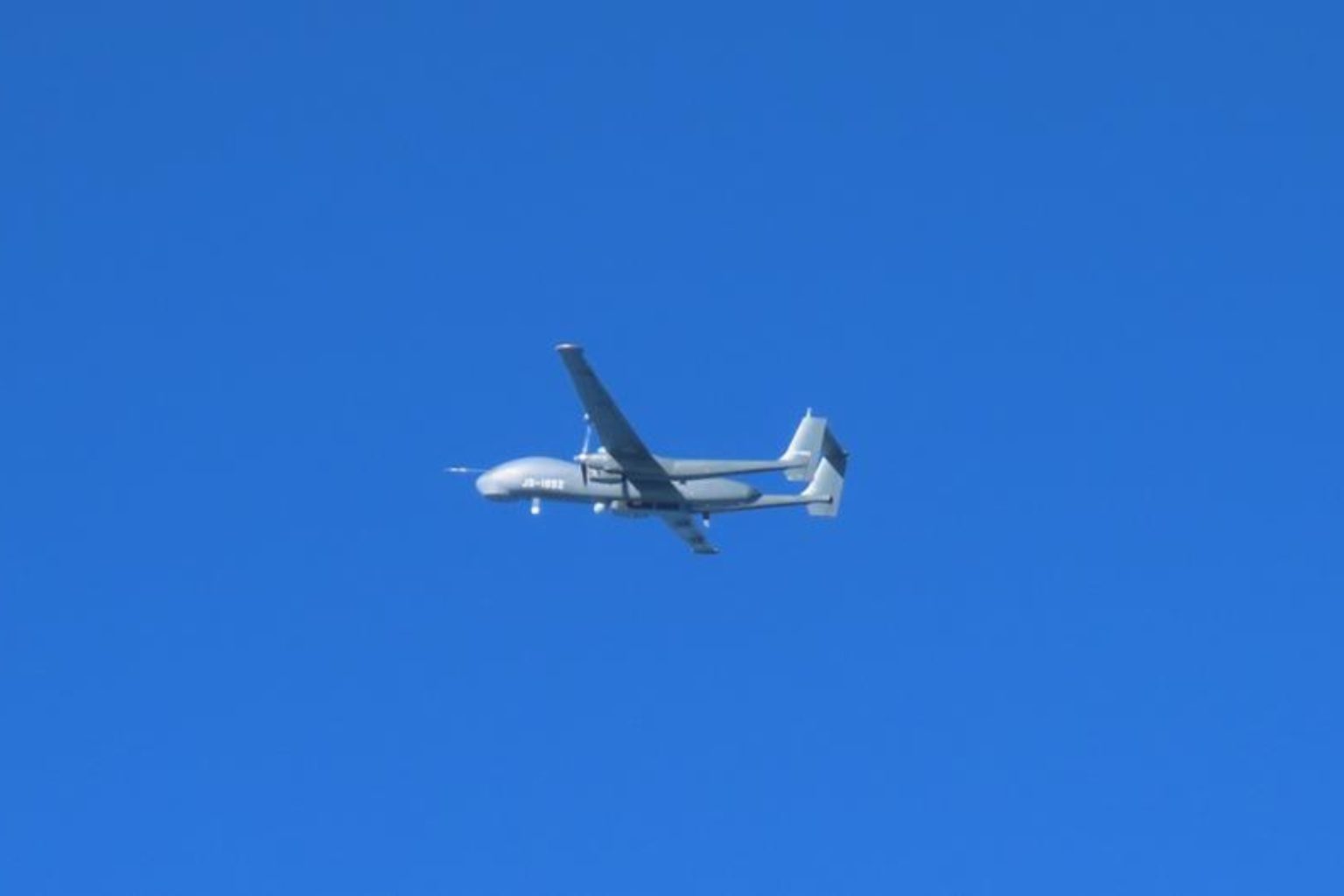Japan’s air force scrambled fighter aircraft to intercept a Chinese combat drone near its southwestern islands, marking the third incident this year of a Chinese military drone operating near Japanese airspace. The Chinese TB-001 drone was detected by Japan’s forces operating between the East China Sea and the Philippine Sea in the Western Pacific Ocean. The drone, designed for long-range reconnaissance and precision strikes, made a hourslong sortie through the first island chain via the Miyako Strait, prompting the urgent launch of Japan Air Self-Defense Force units to meet the aircraft. Air defense systems, including Patriot missile batteries, are stationed on Miyako and Okinawa, along with the U.S. base at Kadena Air Base.
The TB-001 combat drone, distinguishable by its twin-boom tail design, was first unveiled in 2017 and has an operational range of 3,700 miles. With a wingspan of 65 feet, it is designed for medium-altitude long-endurance flights and can carry smart bombs and missiles. Japan’s Joint Staff released a photograph of the gray-painted drone displaying a nose number, although the specific Chinese military branch operating it was not immediately clear. This incident marks the third unique UAV intercepted by Japan this year, following a WZ-7 reconnaissance drone in March and a WL-10 attack drone in May. The Chinese Defense Ministry did not respond to requests for comment on the TB-001’s mission.
Japan has disclosed the positions of Chinese and Russian aircraft and naval vessels operating in its air defense identification zone and exclusive economic zone for years, with the intercepts aimed at preventing suspected airspace violations. Chinese drones have seen an increase in the region as Beijing modernizes and expands its military capabilities. The TB-001 drone has been detected in Japanese airspace on at least seven previous occasions between August 2021 and August 2023, all in the East China Sea where Chinese warships are also frequently present.
The ongoing incidents involving Chinese military drones near Japanese airspace raise concerns about regional security and potential provocations. Japan’s monitoring and interception of these drones are part of efforts to safeguard its territory and prevent airspace violations. The presence of advanced Chinese drones in the region underscores the need for heightened vigilance and cooperation among regional powers to maintain peace and stability. Japan’s response to these incidents reflects its commitment to defending its airspace and protecting its territorial integrity against potential threats. The frequency of these encounters highlights the complex dynamics and challenges faced in the East China Sea and the broader Indo-Pacific region.


